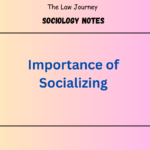When the negligence is committed by two or more persons, then such negligence is called as composite negligence.
Introduction about Composite Negligence
In our nation, the term “composite negligence” refers to both types of cases: independent tort feasors and joint-tort feasors. The tortfeasors’ responsibility under composite negligence is joint and many. In such a case, no one is permitted to argue that damages should be apportioned and that his obligation should be based on his fault. The judgement rendered against the composite tort feasors is for a single sum without apportionment, and the plaintiff has the option of enforcing the entirety of his claim against any one of the defendants. If one defendant has paid more than his fair share, he may seek reimbursement from the other defendants.
In Karnataka State Road Transport Corporation v. Krishnan12, two passenger buses collided, causing the left hands of two passengers on one of the buses to be severed below the shoulder joint. “The current incidents are certainly cases of composite carelessness,” the court said. As a result, both drivers are jointly and severally accountable for the compensation.
Hira Devi v. Bhaba Kant Das MANU/GH/0069/1976: AIR 1977 Gau 31 There was a collision caused by an irresponsible State Transport bus driver and a vehicle driver. Due to this collision, one person died who was travelling in another automobile, and several other occupants of that car were injured. The appointed tribunal divided the damages among the bus and automobile owners. However, the Guwahati High Court ruled that the Tribunal erred in dividing the damages between the two tortfeasors.
According to the Court, this is a case of joint tortfeasors, and the culpability of the car’s owner has not been proven. The claimants were found to be entitled to recover the whole value of their claim from the bus’s owner, the State of Assam. Simultaneously, the Court stated that this does not impact the State’s entitlement to seek payment from the second tortfeasor, the owner of the automobile.
Difference between Contributary negligence and Composite negligence
- Composite negligence refer to the negligence on the part of two or more person whereas in Contributary negligence a person who has himself contributed in negligence.
2. In Contributory negligence the compensation amount to plaintiff is reduce due to contribution of negligence but in Composite negligence the plaintiff can claim full compensation.
3. In Contributary negligence both plaintiff and dependent can be liable whereas in Composite negligence only defendant would be liable.
4. There are exception in Contributory negligence but in Composite negligence no exception.
5. There are relation between the act of the plaintiff and dependent in Contributory negligence whereas in Composite negligence there are no relation.
Related Post
Meaning of Composite Negligence ?
The term ‘composite negligence’ is used in our country for both kinds of cases: independent tort feasors and joint-tort feasors. In composite negligence, liability of the tort feasors is joint and several. In such a situation, no body is allowed to say that there should be apportionment of damages and his liability should be on the basis of his fault.
Difference between Contributary negligence and Composite negligence ?
1. Composite negligence refer to the negligence on the part of two or more person whereas in Contributary negligence a person who has himself contributed in negligence.
2. In Contributory negligence the compensation amount to plaintiff is reduce due to contribution of negligence but in Composite negligence the plaintiff can claim full compensation.
3. In Contributary negligence both plaintiff and dependent can be liable whereas in Composite negligence only defendant would be liable.
References
- A.K Jain law of torts
- Universals Law of Torts
- Law of Torts by J.N. Pandey
- Law of Torts by Ratanlal and Dhirajlal
- P.S.A. Pillai’s – Law Of Tort
- Law of Torts by RK Bangia (22nd Edition)

















